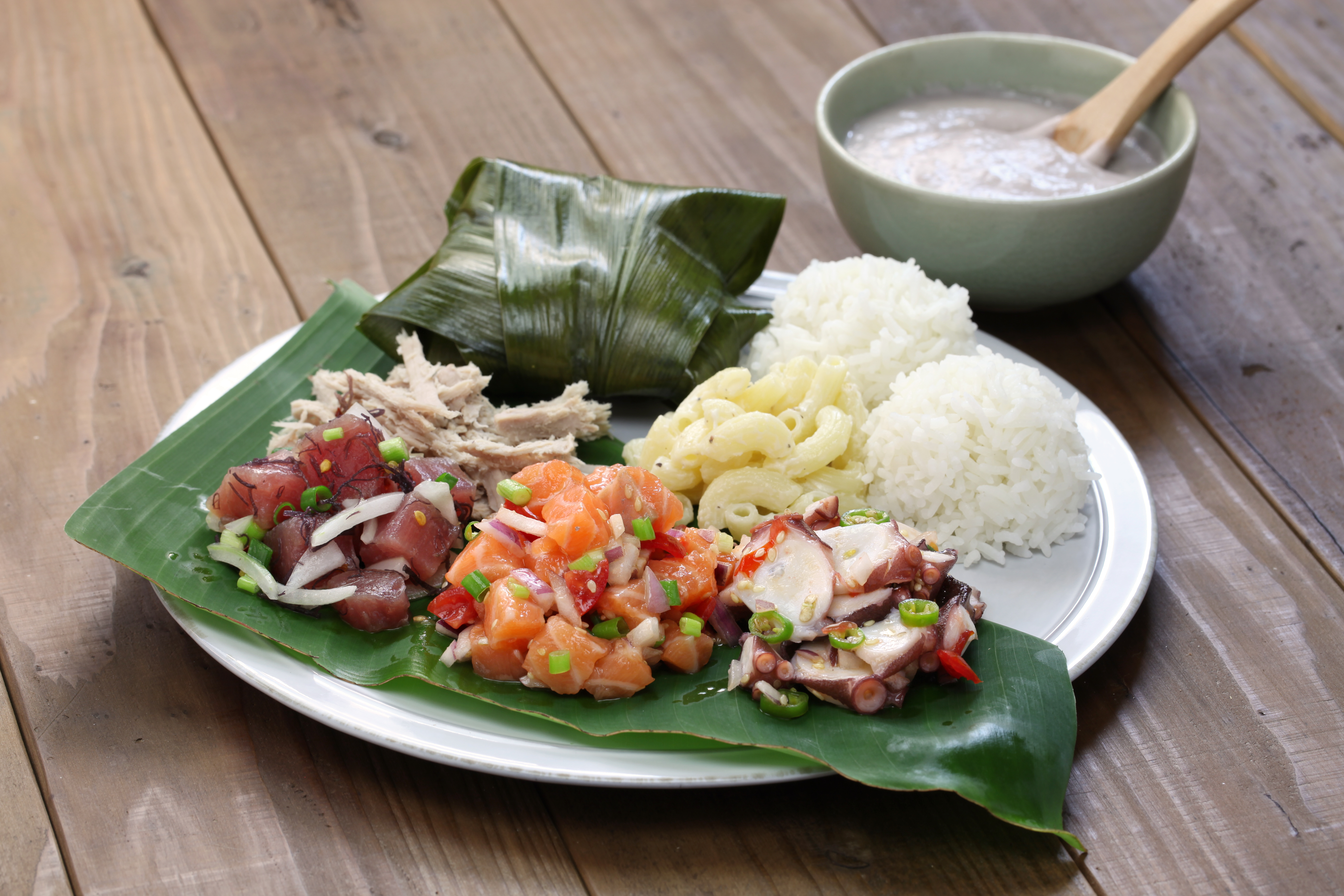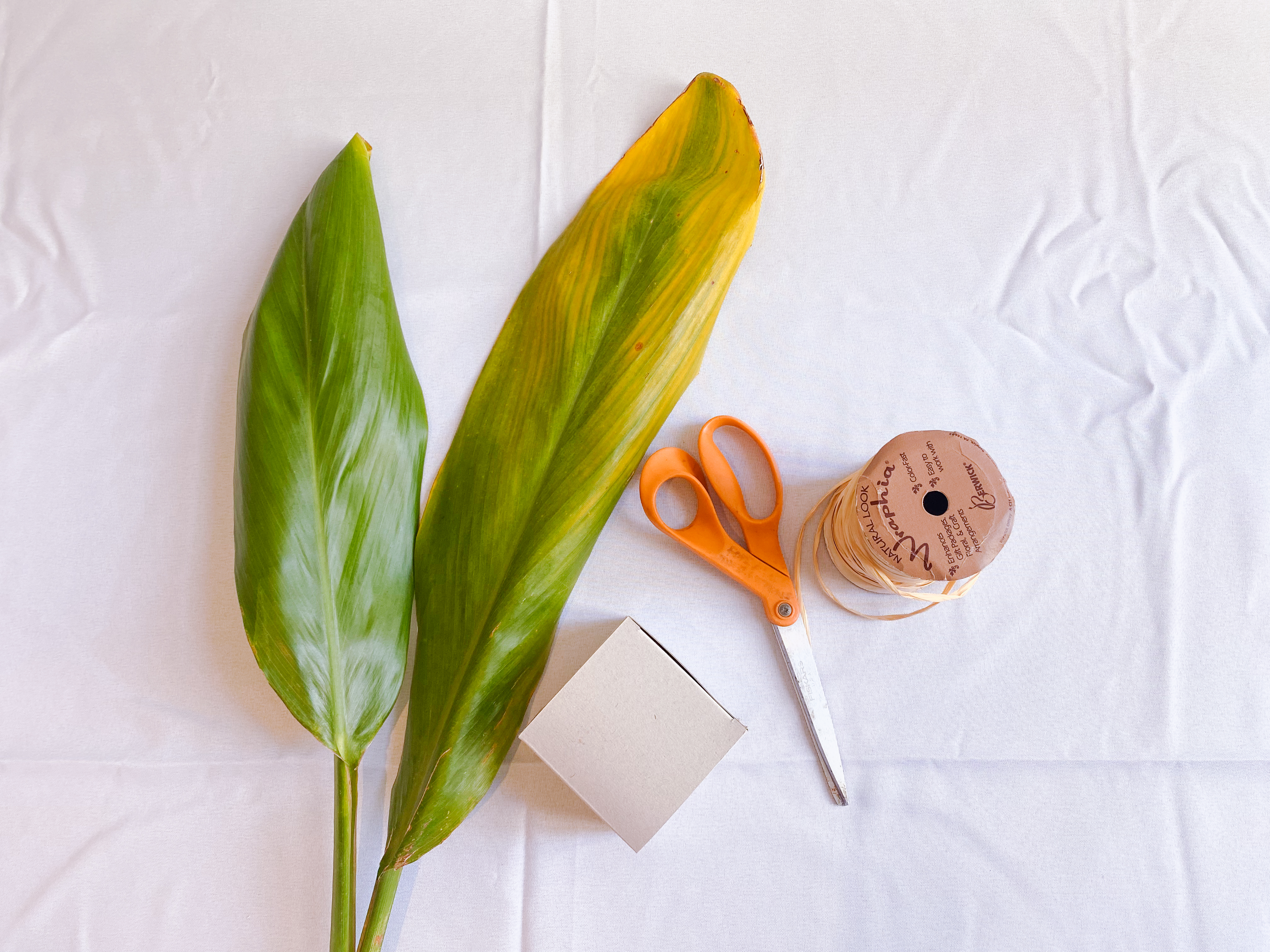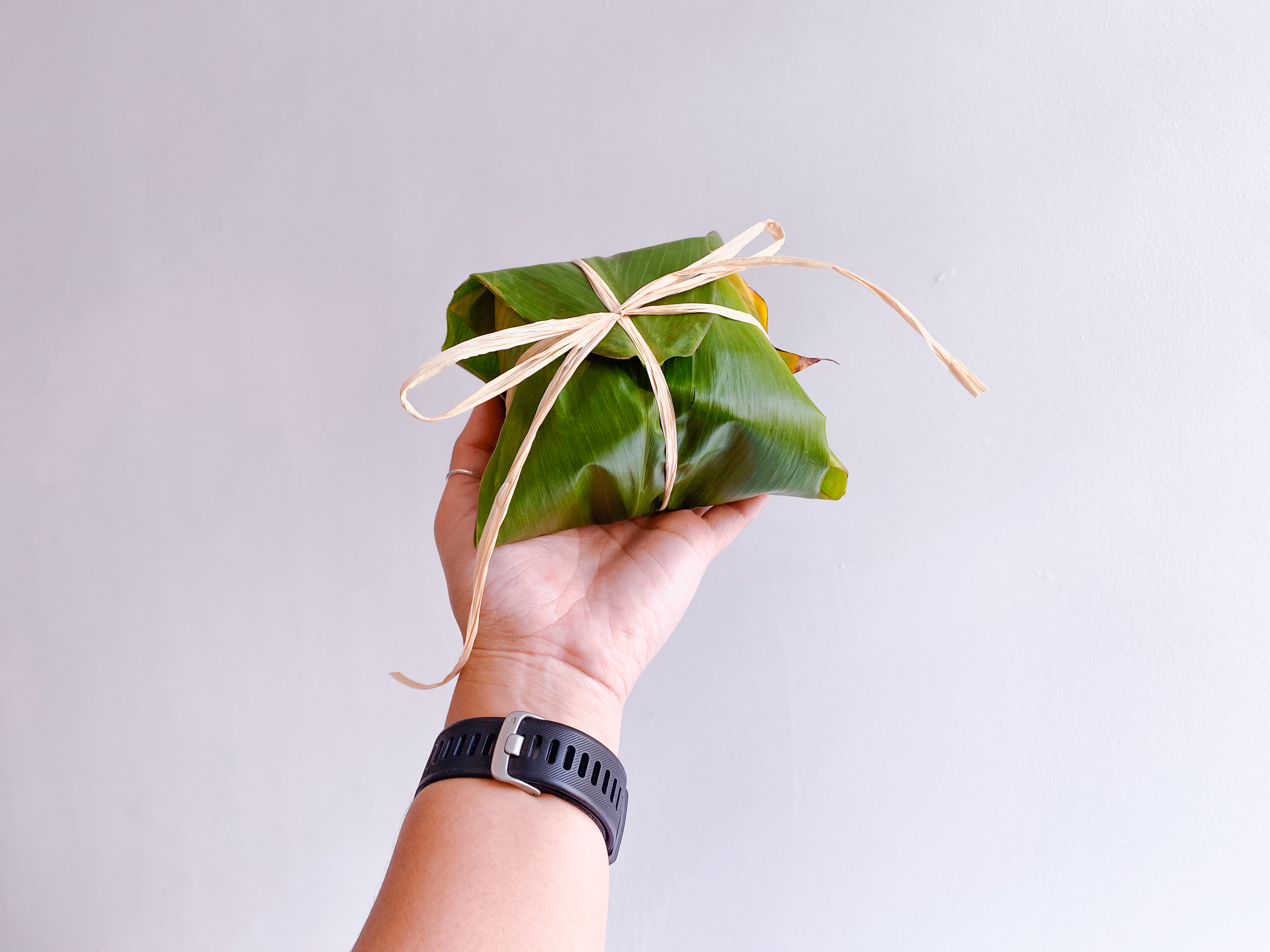The ti plant is commonly grown throughout Hawaiʻi. It is a tropical broadleaf evergreen plant with palm-like leaves believed to bring good luck. For hundreds of years, ti leaves have been used in medicine, cooking and construction.They’re easy to find and environmentally friendly. By using ti leaf in place of plastic, foil, and other single-use items, you can help reduce waste and keep Hawaii trash Free. Here are three ways to use ti leaves at home.
1. Cooking
Ti leaves can be used in cooking as a replacement for foil. In Hawaiʻi, ti leaves are often used to wrap lau lau while it steams, holding the lūʻau leaf (taro leaf) and meat together. All you need to do is wrap your food and secure the ti leaf in place with a string. Leaves can also be used as disposable plates to reduce our need for paper, plastic and foam plates and containers.
2. Wrapping
Most wrapping papers have a plastic coating, which makes them unrecyclable. If you have something small to give, try wrapping it with a ti leaf! You can do this in the same way you would wrap lau lau. Depending on the size of your gift, you may need to use more than one. Wrap it around your gift and secure it with a string, the ti leaf stem, or even a ti leaf lei. The leaves add a beautiful pop of color, and you don’t need to worry about creating any waste!
3. Lei
The next time you need a lei, make your own to save money and a trip to the store. Flowers are beautiful, but many aren’t readily available or may be out of season. Ti leaves can be found any day of the year, and if you don’t have your own plant, those who do are often more than happy to share theirs with a friend.
Once you’ve collected a batch of ti leaves, prepare them by placing them in the freezer overnight. The next day, they should be soft enough to twist. “Debone” your leaf by separating the leaves from the spine with your hands or a pair of scissors. Tie two leaves together and start twisting them individually. Then, twist the two strands together the opposite way. As you reach the end of one leaf, add a new leaf by twisting another one on to the end, and repeat. Making ti leaf lei can be a little sticky and messy, so make sure to wear clothes you don’t mind getting dirty. To see what the process looks like, watch our tutorial here.
Sources: American University, Communification Podcast, Onolicious Hawaii, The Spruce






